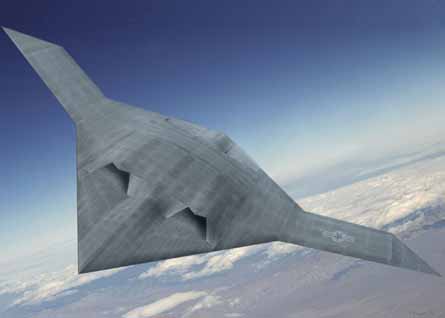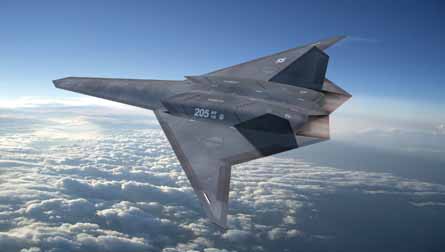USAF to also boost strike fleet with new aircraft design
High-energy laser weapons are a potential future upgrade for the Northrop Grumman B-2 Spirit bomber, which is expected to remain in service beyond 2050. Improved passive and active stealth techniques are also expected to be needed beyond 2020 to keep the type viable as a penetrating bomber, the company says.
A US Air Force advanced concepts simulation exercise in November evaluated use of a solid-state laser system for positive combat identification and self-defence. The design concept deploys the laser from the aircraft's internal weapons bay, says Northrop programme manager Dave Mazur, and also uses its optics for target identification, as the only imaging sensor the B-2 carries is its radar.
Northrop is proposing a series of incremental upgrades to keep the USAF's 21-aircraft B-2 fleet viable while the service pursues a three-phase approach to developing and fielding a new long-range strike (LRS) capability. The plan is to resize and modernise the current bomber fleet, develop a new aircraft to replace its Boeing B-1Bs and B-52s around 2020 and then, beyond 2035, field a new long-range strike capability that could include hypersonic vehicles.
There has never been a roadmap for B-2 upgrades, says Mazur, but one is now being developed with the USAF and is to be co-ordinated with similar plans for the B-1 and B-52 under Phase 1 of the LRS strategy. Northrop is looking at incremental upgrades in the $100-300 million range that could be introduced on two-year cycles and would also help reduce risk for the next-generation LRS aircraft, Mazur says.
Upgrades are already under way to improve low-observable maintainability, add smart bomb racks, Link 16 datalink and EHF satellite communications (satcom), and modernise the radar with an active electronically scanned array (AESA). These will provide the building blocks for further enhancements. The AESA upgrade, required to shift frequencies, will add "hooks" for future modes, including high-resolution synthetic aperture radar and enhanced land/sea moving-target indication, says Mazur.
EHF communications will "provide a big pipe to the aircraft", and allow the B-2 to be used for "stealthy non-traditional intelligence, surveillance and reconnaissance", says Mazur. "We have over 100 antennas on the aircraft and can use EHF to get the information off the aircraft." Northrop has proposed upgrading the B-2's defensive system to a digital receiver, which could also be coupled to EHF satcom to send threat information offboard, he says.
The EHF upgrade, to enter development next year, will also replace the B-2's processors and provide the capability to carry a rotary launcher in one weapon bay and smart racks in the other. "Now we can only load the software for either launchers or racks," says Mazur. "The processor upgrade will allow us to load both." This so-called "mixed load" capability will allow the B-2 to carry four 2,270kg (5,000lb) GBU-28 bunker busting bombs in one bay and 40 230kg GPS-guided Joint Direct Attack Munitions in the other.
US Congress has, meanwhile, also provided initial funding for new weapons, with the B-2 planned to carry two 13,600kg Massive Ordnance Penetrators or 80 115kg Small Diameter Bombs. However, this load out could be increased "up to 120 with modifications and 240 with new racks", says Mazur.
Stealth improvements could be required around 2020-25 as the threat escalates, says Mazur, citing new passive treatments and "active cancellation" techniques. "The B-2 is still very viable, but we see techniques that can add to survivability, and we need to take the first steps today."
|
|---|
Northrop says a "mannable" subsonic design could meet LRS requirements, while Lockheed favours supersonic and unmanned (Below) |
|
|---|
Source: Flight International


















